What to look out for at Masterpiece, from speedboats and cabinets to paintings and books
Masterpiece takes place this week — June 27 to July 3 — and Huon Mallalieu can hardly wait. Here are some of the pieces he's most looking forward to seeing.
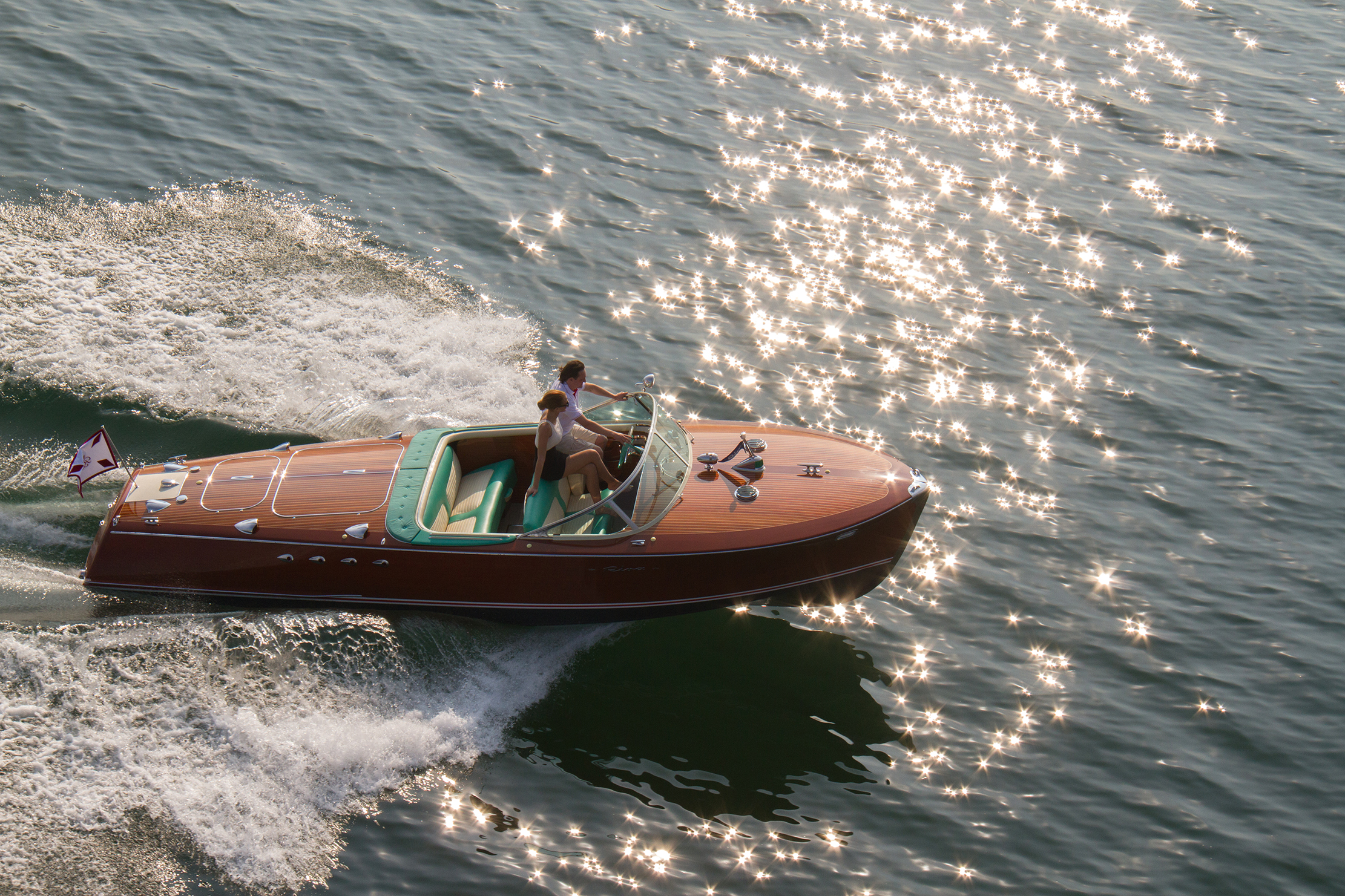
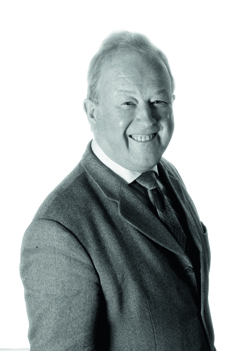
The Masterpiece Fair will return to the Royal Hospital, Chelsea, SW3, for the fourth time between June 27 and July 3, where there will be 160 international exhibitors, whose specialities range from antiquities to contemporary jewellery. Because of enhanced security, visitors are requested not to bring large bags to the fair and to leave anything larger than a laptop bag in the cloakroom. As ever, there will be an extensive programme of talks and events and ample opportunities for elegant refreshment as well as a chance to see remarkable objects.
In the 20 years since he set up his studio in Ireland, Joseph Walsh has carved a well-deserved international reputation for his innovative and technically brilliant furniture. As he says: ‘Each line and grain in the wood is telling something about its past, and through the process of making characterises the final piece to give the material an elegant future.’
I have been an admirer since first seeing his work in Paris some years ago and look forward to the new collection of domestic pieces at Masterpiece with Sarah Myerscough of Barnes, SW13. It includes this ebonised walnut cleft-wood credenza.
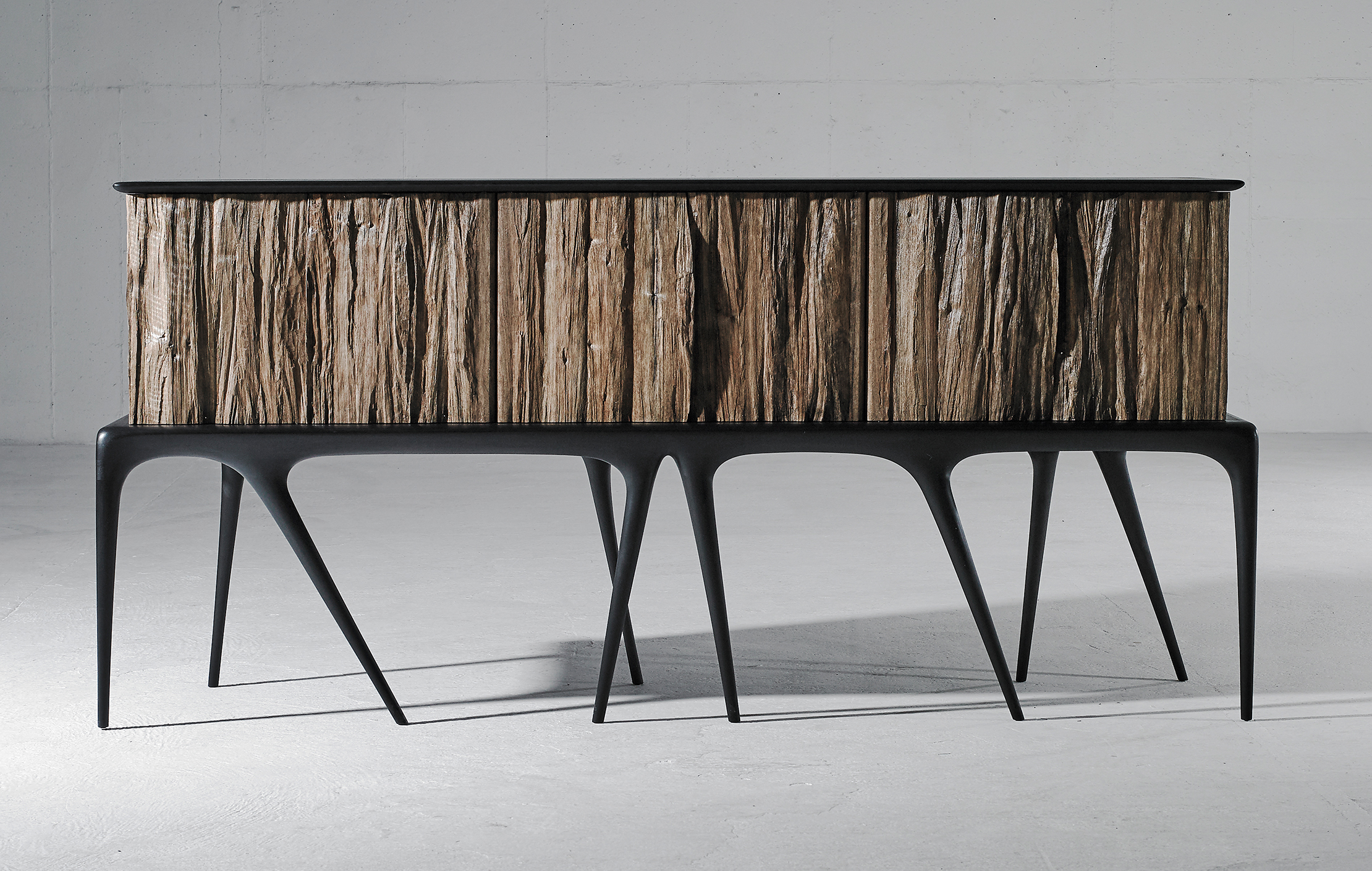
Although some very expensive luxury goods can, paradoxically, cheapen an occasion such as this fair, the marriage of quality, elegance and craftsmanship displayed by the now Chinese-owned Italian Ferretti Group’s Ventura Riva Tritone motor launch (featured at the top of this page) makes it a perfect exhibit. Were lineage rates just a little higher, I would find it a very tempting boy’s toy.
Sir Richard Arkwright (1732–92) began as a barber’s apprentice and it was his invention of waterproof dye for wigs that funded his famous developments in cotton-spinning machinery. Having based his mills in Derbyshire, he married into the neighbouring gentry and then wedded his daughter Susannah to another neighbour, Charles Hurt. Hurt ran a lead works and smelting business and, in 1797, his expertise in soughs — the channels that drained water from mines — led to the rescue of a miner trapped underground for eight days.
Agnews of St James’s has a pair of 911⁄4in by 551⁄4in portraits of Charles and Susannah (with their daughter) by Joseph Wright of Derby.
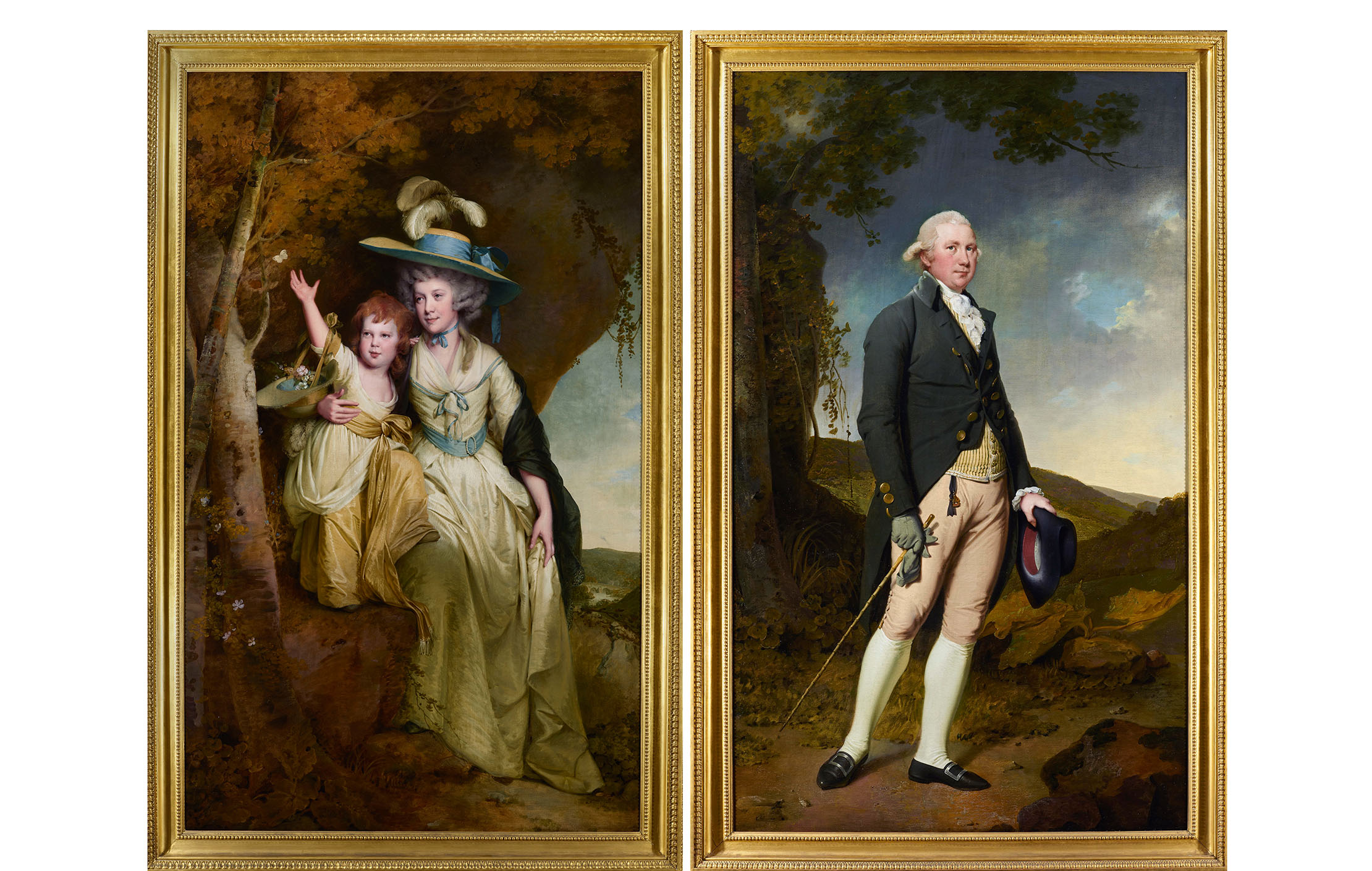
Among the antiquities and works of art brought from Paris by Galerie Chenel is a late-1st-century ad Roman head of Hermes, formerly in the great collection of Capt Edward Spencer-Churchill at Northwick Park, Worcestershire, that was sold by Christie’s in 1965. When unearthed in the late 18th century, it was repolished, as was then the practice.
Sign up for the Country Life Newsletter
Exquisite houses, the beauty of Nature, and how to get the most from your life, straight to your inbox.
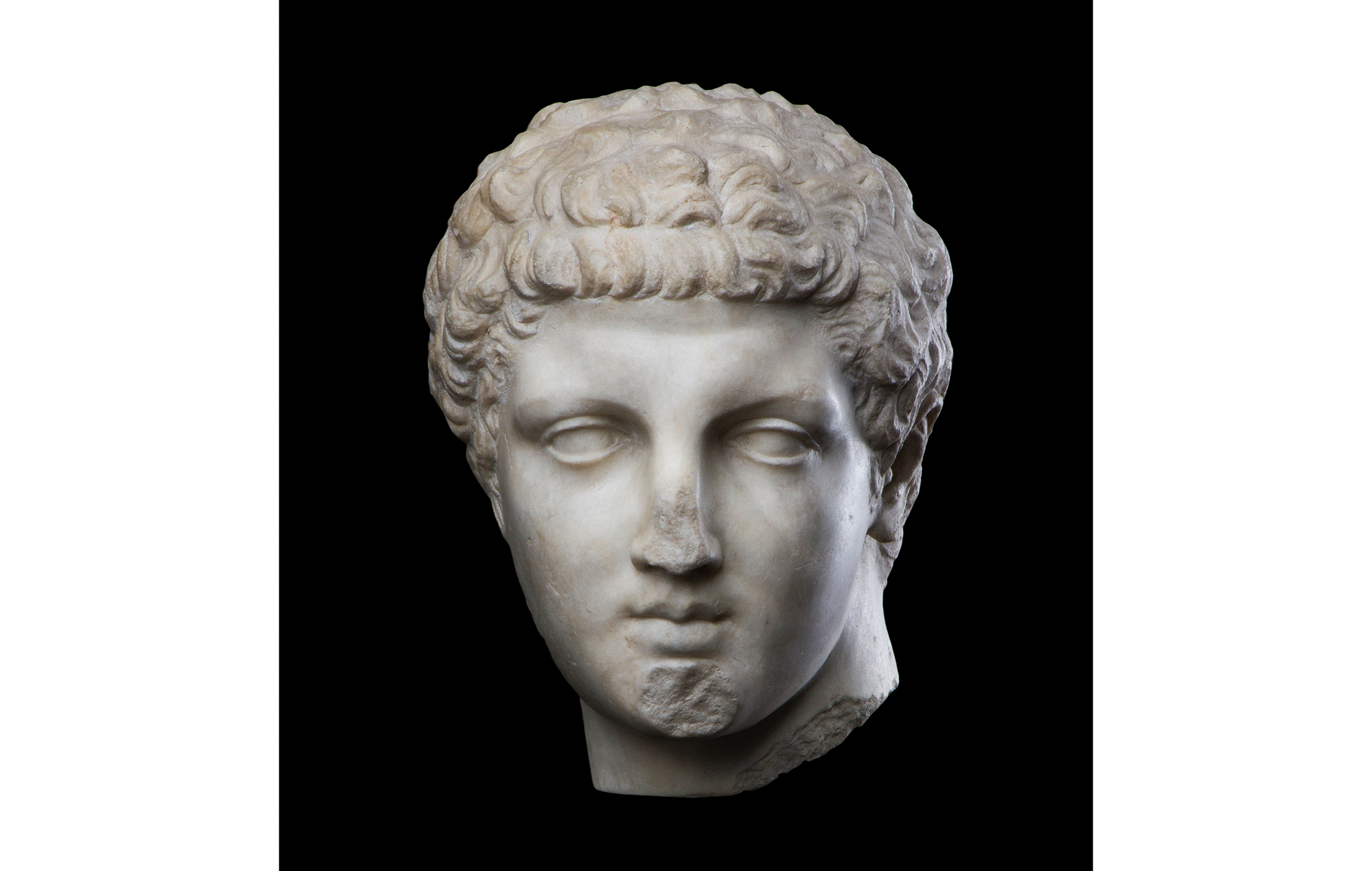
Comfortable solidity seems to characterise a George IV mahogany library chair, with unusual paw supports, that would be perfect for an after-lunch nap. Covered in black horsehair and dating from about 1825, it will be shown by Edward Hurst, who deals from a Dorset farm and is unafraid of such strong pieces.
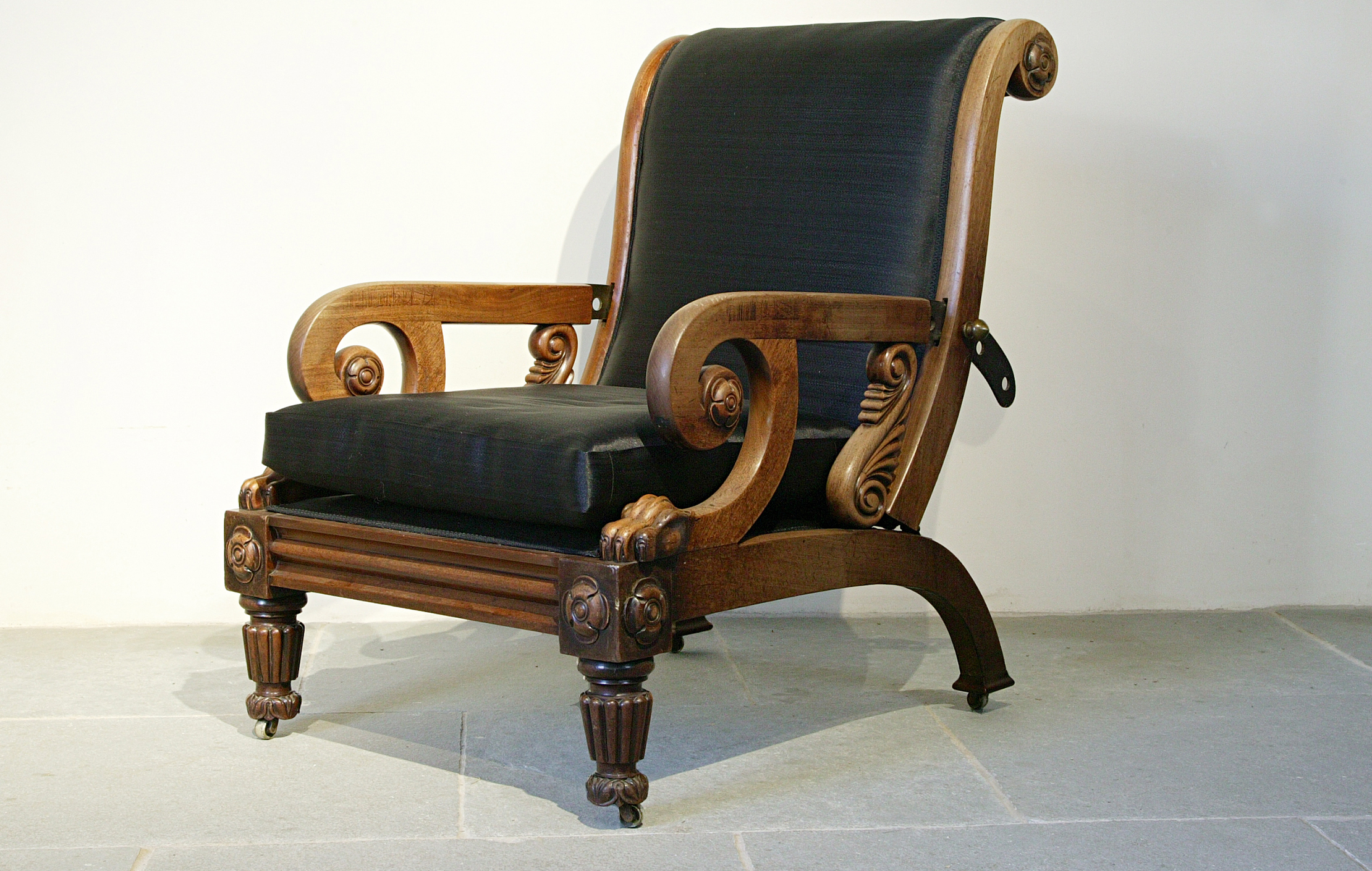
The Dublin dealer Rory Rogers has an exceptional George II Irish writing cabinet, dateable to about 1750. It is finely carved on the apron and legs and is surmounted by a scrolling broken pediment with an eagle and flowerheads.
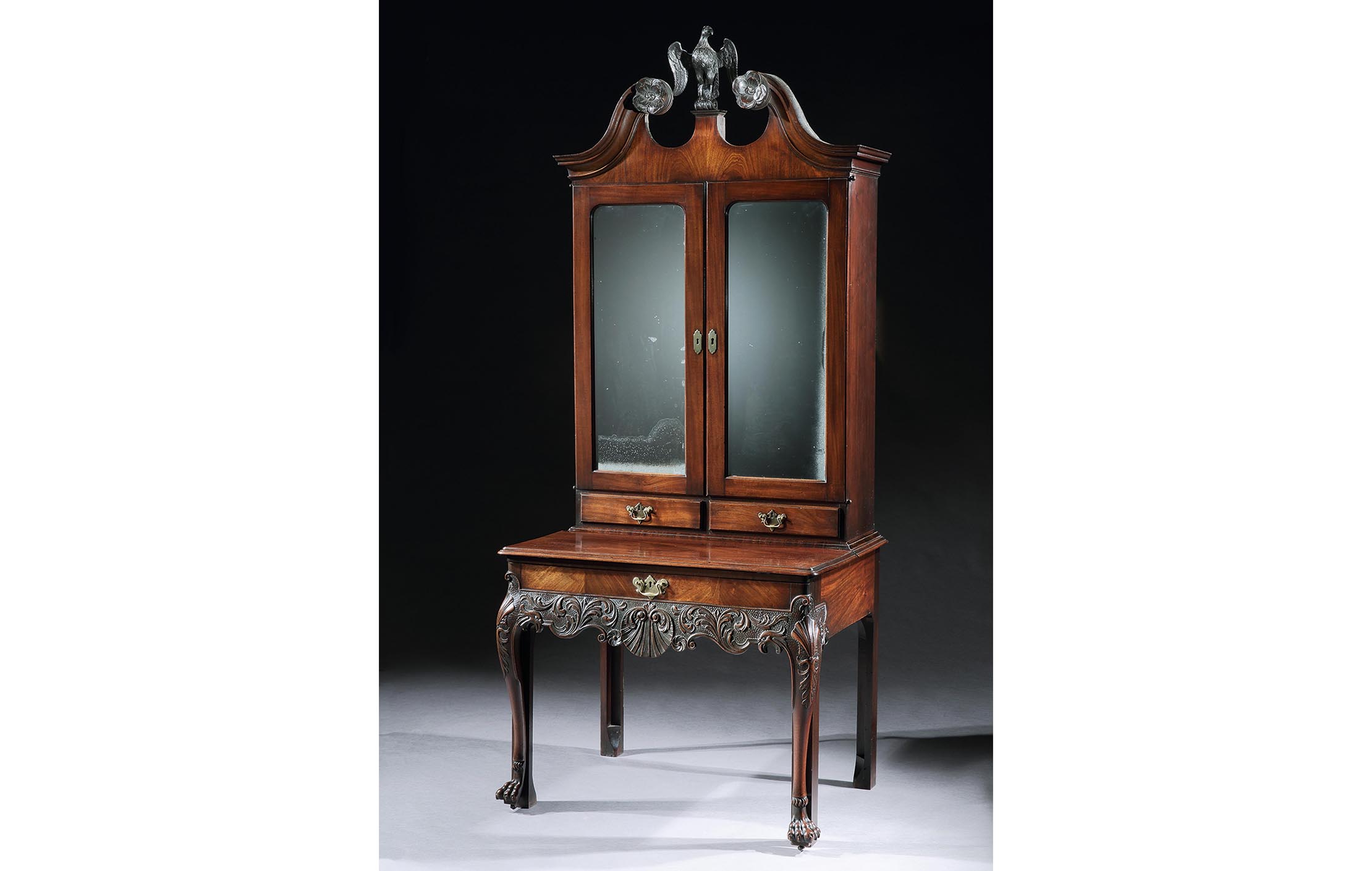
Alto Adige poker and penwork cassone were marriage chests and are sometimes found in Anglican church vestries, perhaps because their slightly naïve decoration could not give rise to suspicions that vicars had papistical tendencies.
However, the one offered by Robert Young of Battersea has a secular provenance in Rosalind, the ‘Radical Countess’ of Carlisle (1845–1921), wife of the painter and 9th Earl, George Howard. It is comprehensively decorated with birds, figures, floral and foliate motifs, as well as a lion and leopard, and dates from about 1640.
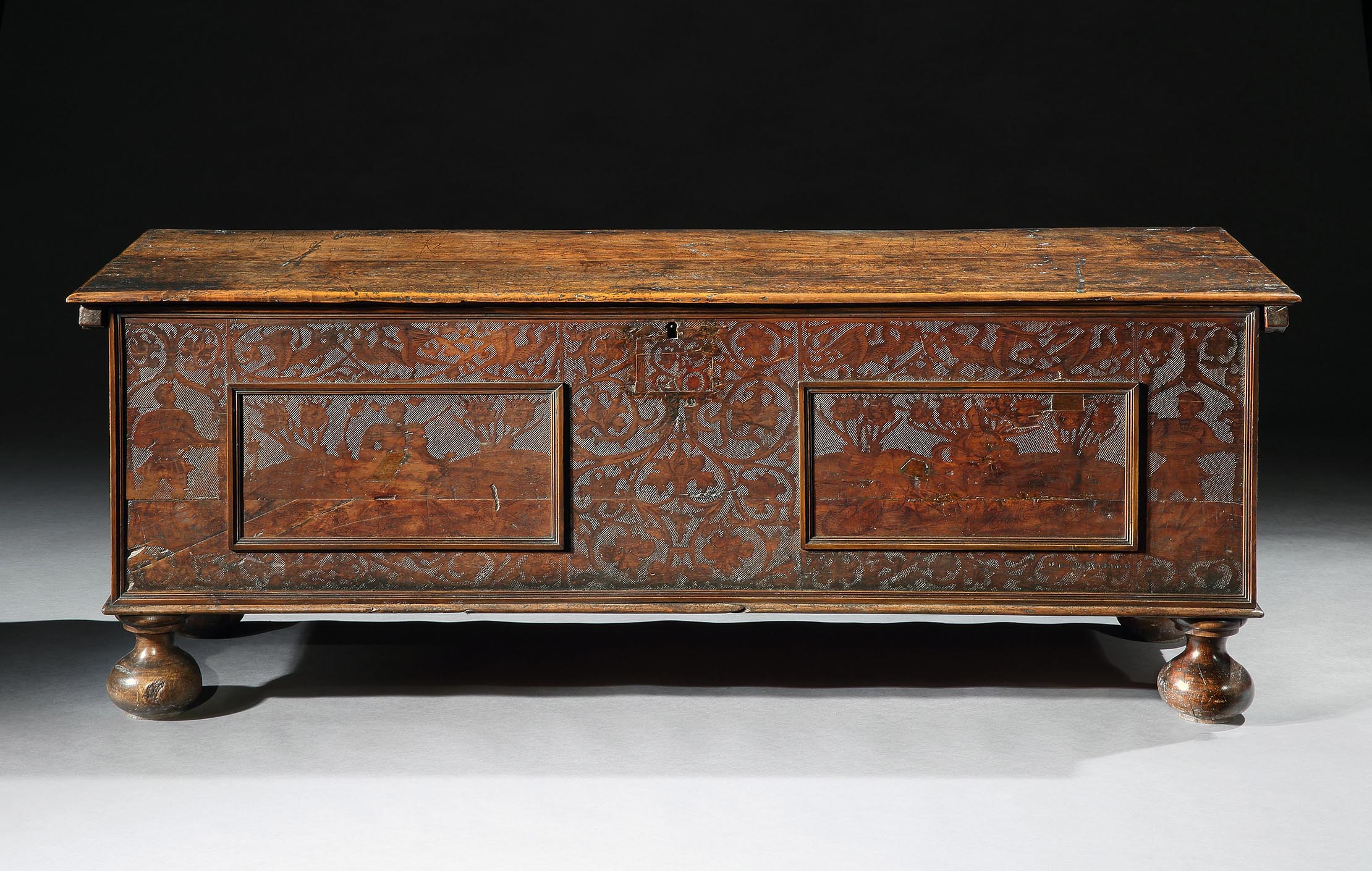
Carter Marsh of Winchester brings a Tompion month-going longcase clock – with Tompion’s own all-or-nothing pull-quarter repeating system – that is known as the ‘Hamburg’ because it has been in a German collection since the 1980s.
It is important not only for its workings, but also for the elaborate case made for it in the mid 1680s, which is attributed to the cabinetmaker Jasper Braem, a descendant of Dutch immigrants, who was a co-tenant of the clockmaker in Fleet Street.
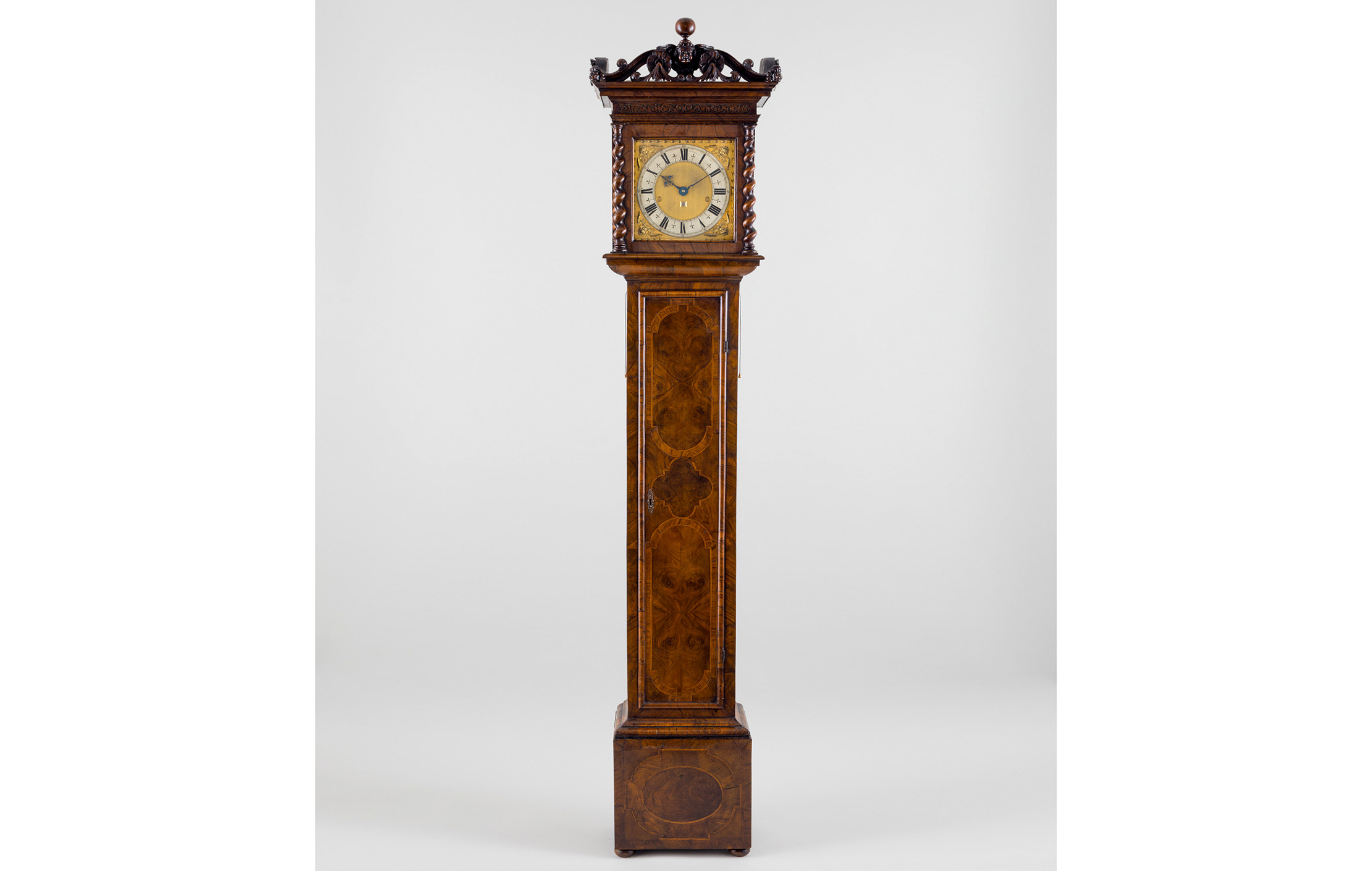
Finally, the book dealer Peter Harrington has a remarkable relic of Sylvia Plath, the 1962 final proof of her only novel, The Bell Jar, with her revisions.
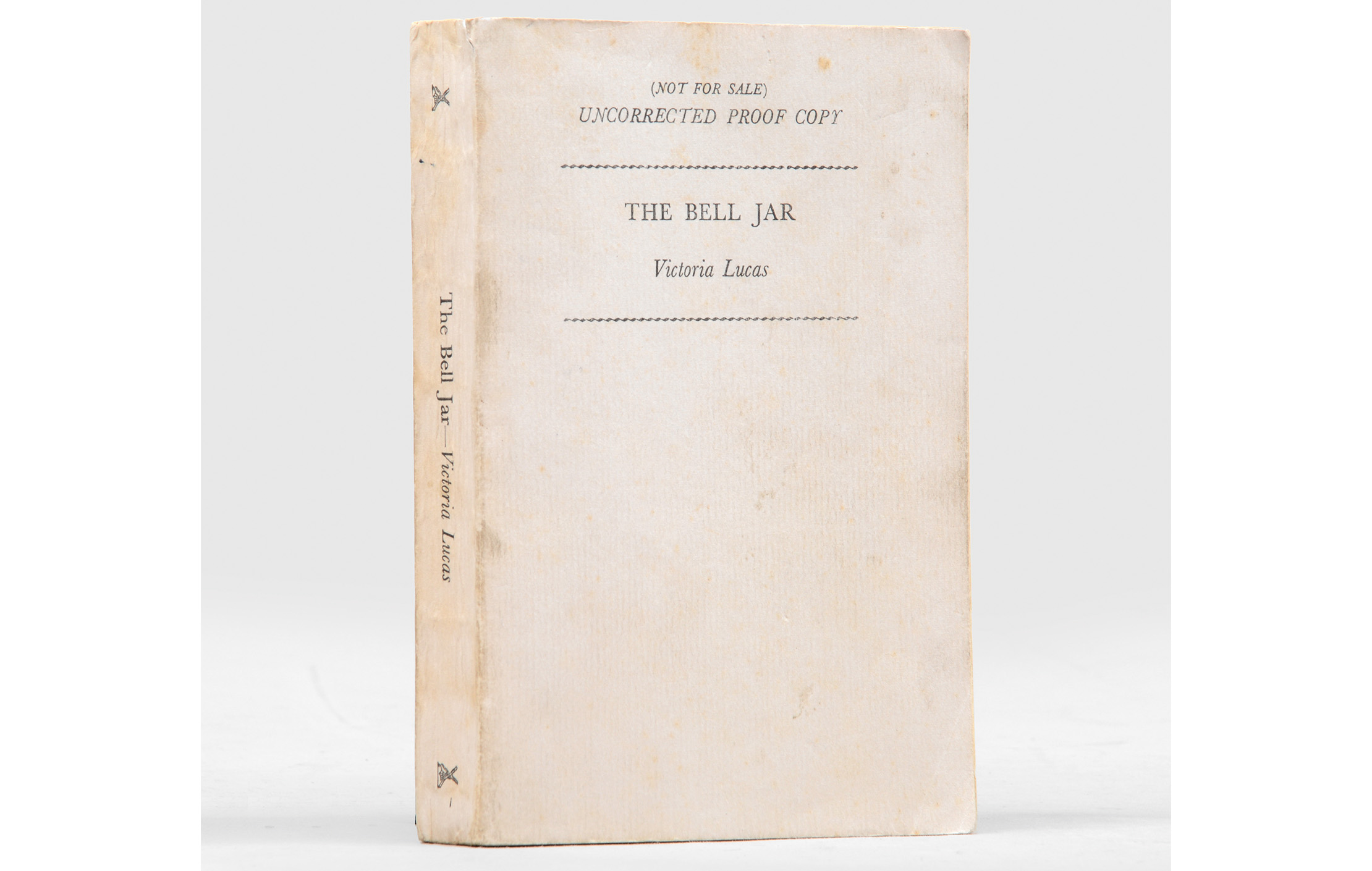
It arrived the day after she had discovered her husband Ted Hughes’s affair with Assia Wevill and, as she wrote, it ‘saved the day for me: I roared and roared, it was so funny and good’. Although the proof is dated 1962, the book was not published until early the following year.
Masterpiece Fair takes place at the Royal Hospital, Chelsea, between June 27 and July 3 — find out more at www.masterpiecefair.com
After four years at Christie’s cataloguing watercolours, historian Huon Mallalieu became a freelance writer specialising in art and antiques, and for a time the property market. He has been a ‘regular casual’ with The Times since 1976, art market writer for Country Life since 1990, and writes on exhibitions in The Oldie. His Biographical Dictionary of British Watercolour Artists (1976) went through several editions. Other books include Understanding Watercolours (1985), the best-selling Antiques Roadshow A-Z of Antiques Hunting (1996), and 1066 and Rather More (2009), recounting his 12-day walk from York to Battle in the steps of King Harold’s army. His In the Ear of the Beholder will be published by Thomas Del Mar in 2025. Other interests include Shakespeare and cartoons.
-
 ‘It had the air of an ex-rental, and that’s putting it politely’: How an antique dealer transformed a run-down Georgian house in Chatham Dockyards
‘It had the air of an ex-rental, and that’s putting it politely’: How an antique dealer transformed a run-down Georgian house in Chatham DockyardsAn antique dealer with an eye for colour has rescued an 18th-century house from years of neglect with the help of the team at Mylands.
By Arabella Youens
-
 A home cinema, tasteful interiors and 65 acres of private parkland hidden in an unassuming lodge in Kent
A home cinema, tasteful interiors and 65 acres of private parkland hidden in an unassuming lodge in KentNorth Lodge near Tonbridge may seem relatively simple, but there is a lot more than what meets the eye.
By James Fisher